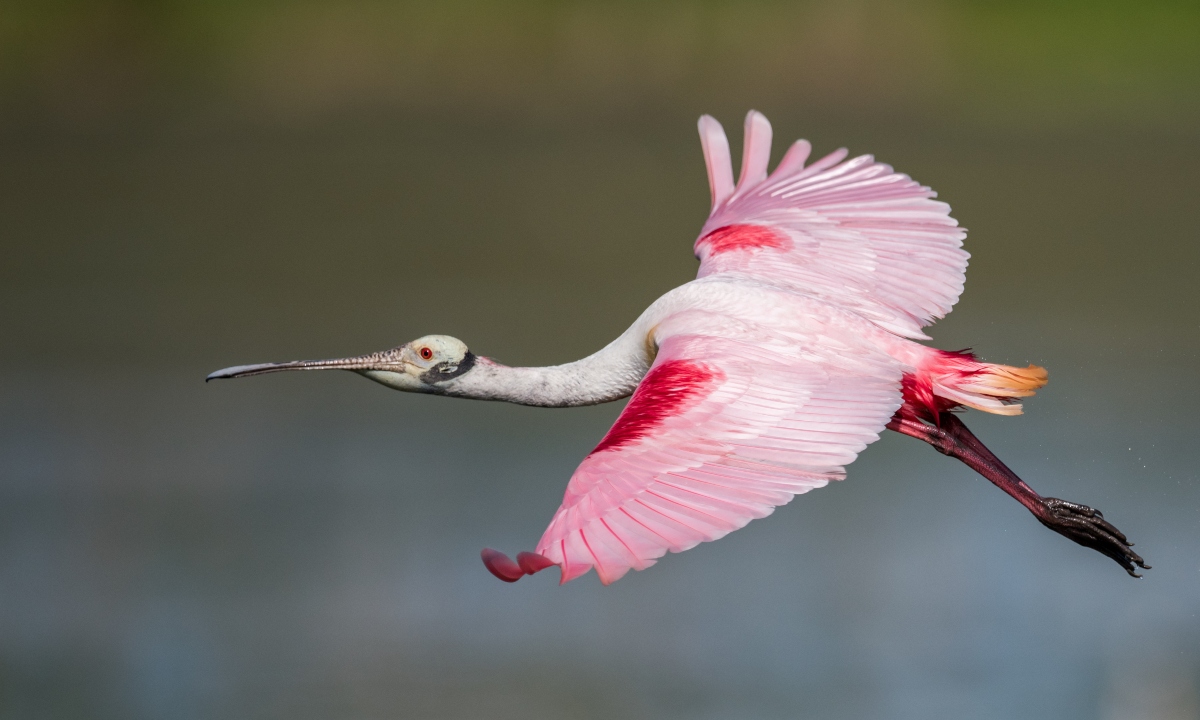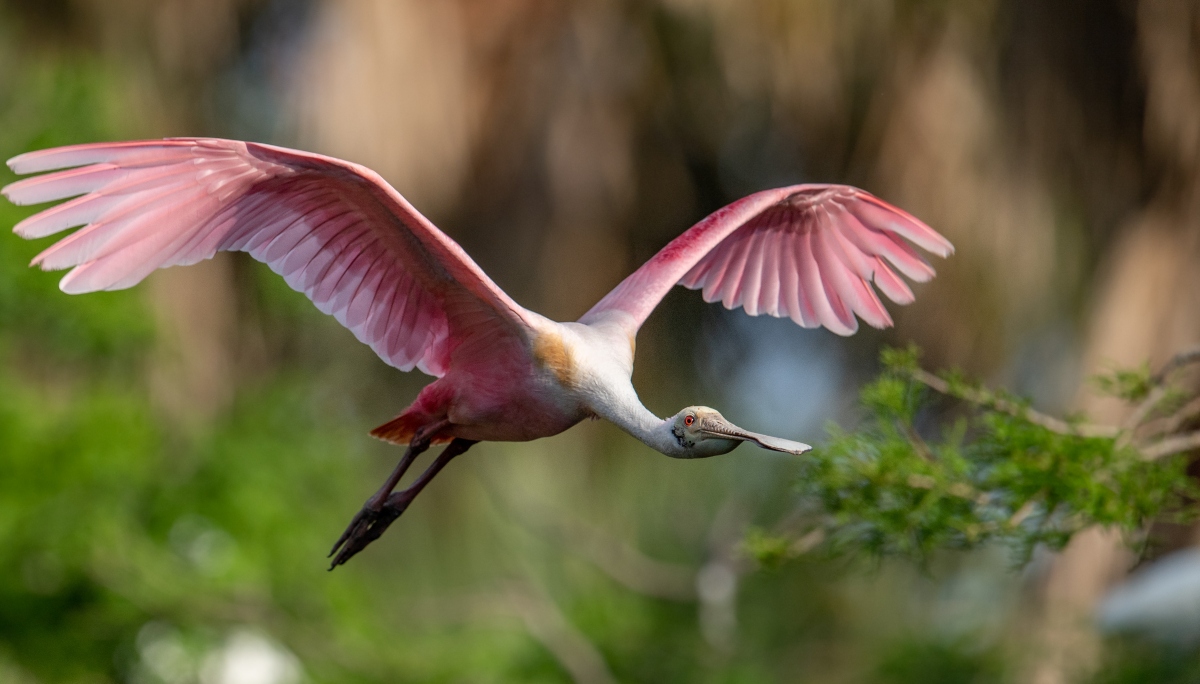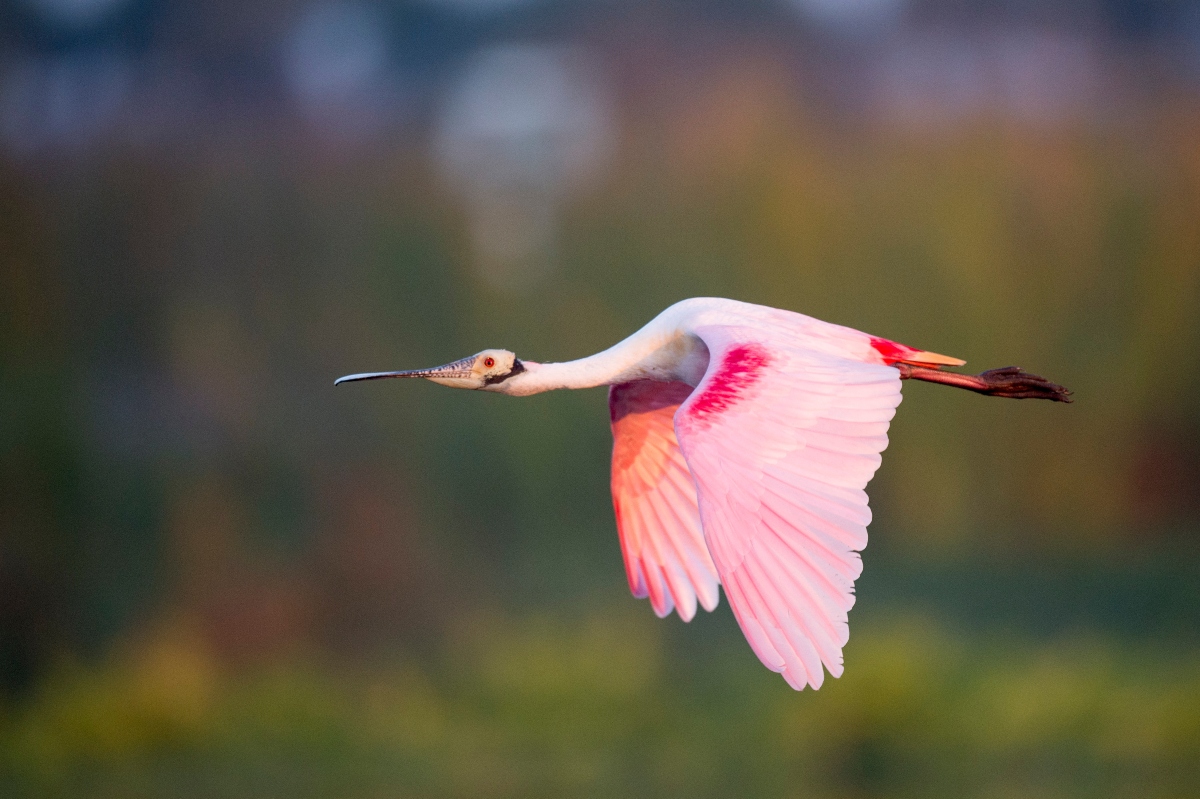The Roseate Spoonbill, (Platalea ajaja), radiates a vibrant, pink splendor, enchanting observers as it gracefully forages through the shallow wetlands of the Americas. Its vividly colored plumage, an enchanting gradient of pinks and reds, emerges not from pigmented feathers but from a diet rich in carotenoid-bearing organisms, embodying the intrinsic link between the bird and its habitat.

A beholder of the wetland’s tranquility, the Roseate Spoonbill sweeps its characteristically shaped bill through the water with a rhythmic, side-to-side motion. The specialized bill, evocative of a spoon in its structure, is not merely an aesthetic marvel but a remarkable adaptation for detecting and ensnaring prey beneath the surface. This tactile feeding method intertwines the spoonbill with the ebb and flow of the aquatic world, each sweeping motion a delicate dance with the surrounding waters.
In communal rookeries, the spoonbills’ nests cradle new life, perched securely amid the mangroves and trees that anchor the water’s edge. The symphony of croaks and squawks from these nesting colonies punctuates the ambient soundscape of rustling reeds and gentle waves, embedding the spoonbills within a dynamic, interconnected biotic community.

The world of the Roseate Spoonbill is a realm of perpetual reflection, where the vibrant hues of its plumage are mirrored in the tranquil waters below. This aesthetic harmony echoes the deeper, symbiotic relationship that binds the bird to its wetland home. Amidst the serenity of the waters, the spoonbill’s life unfolds, its vivid presence a testament to the rich, life-sustaining tapestry of the wetlands.
So, as wings unfold to embrace the warm, coastal breezes, the Roseate Spoonbill perpetuates its cyclic existence, intertwined with the pulsating life of the estuaries. Its flight, a delicate hue against the vastness of the sky, speaks to the timeless ephemerality and enduring vitality of life, where every wingbeat resonates with the boundless, enigmatic essence of the wild.
